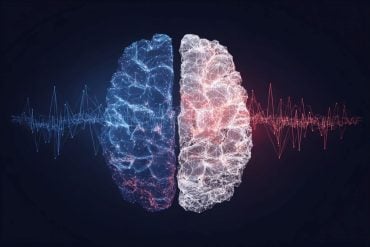Summary: Researchers shed light on why the life expectancy and aging gap is narrowing between men and women.
Source: University of Jyväskylä
In the Western world, life expectancy rapidly increased in the twentieth century, but women still have longer life expectancy than men. In Finland, women live on average five years longer than men.
The gap between the sexes was greatest in the 1970s, when life expectancy at birth was almost 10 years higher for women than for men. However, in recent decades, this gap has gradually narrowed.
The difference between the sexes can also be seen in biological aging, as revealed by a study recently published in The Journals of Gerontology: Series A.
The study investigated whether there are differences in biological aging between men and women and whether the potential differences can be explained by lifestyle-related factors. These differences were investigated in young and older adults.
Several epigenetic clocks were used as measures of biological aging. Epigenetic clocks enable studying lifespan-related factors during an individual’s lifetime. They provide an estimate for biological age in years using DNA methylation levels determined from a blood sample.
“We found that men are biologically older than women of the same chronological age, and the difference is considerably larger in older participants,” says Anna Kankaanpää, doctoral researcher at the Gerontology Research Center and the Faculty of Sport and Health Sciences.
More frequent smoking among men explained the sex gap in aging in older but not in young adult twins. In addition, men’s larger body size explained a small part of the sex gap in both age groups.
“We observed a sex difference in aging pace, which was not explained by lifestyle-related factors,” says Kankaanpää.

“In our study, we also used a quite rare study design and compared aging pace among opposite-sex twin pairs. A similar difference was also observed among these pairs of twins. The male sibling was about one year biologically older than his female co-twin.
“These pairs have grown in the same environment and share half of their genes. The difference may be explained, for example, by sex differences in genetic factors and the beneficial effects of the female sex hormone estrogen on health,” Kankaanpää says.
The results help to understand lifestyle behaviors and sex differences related to biological aging and life expectancy. The results suggest that the decline in smoking among men partly explains why the sex gap in life expectancy has narrowed in recent decades.
The research was carried out in collaboration with the University of Jyväskylä and the University of Helsinki. The subjects were younger (21 to 42 years) and older (50 to 76 years) adult twins from the Finnish Twin Cohort. Lifestyle-related factors including education, body mass index, smoking, alcohol use and physical activity, were measured using questionnaires.
About this aging research news
Author: Press Office
Source: University of Jyväskylä
Contact: Press Office – University of Jyväskylä
Image: The image is in the public domain
Original Research: Open access.
“Do Epigenetic Clocks Provide Explanations for Sex Differences in Life Span? A Cross-Sectional Twin Study” by Anna Kankaanpää et al. Journals of Gerontology: Series A
Abstract
Do Epigenetic Clocks Provide Explanations for Sex Differences in Life Span? A Cross-Sectional Twin Study
Background
The sex gap in life expectancy has been narrowing in Finland over the past 4–5 decades; however, on average, women still live longer than men. Epigenetic clocks are markers for biological aging which predict life span. In this study, we examined the mediating role of lifestyle factors on the association between sex and biological aging in younger and older adults.
Methods
Our sample consists of younger and older twins (21‒42 years, n = 1 477; 50‒76 years, n = 763) including 151 complete younger opposite-sex twin pairs (21‒30 years). Blood-based DNA methylation was used to compute epigenetic age acceleration by 4 epigenetic clocks as a measure of biological aging. Path modeling was used to study whether the association between sex and biological aging is mediated through lifestyle-related factors, that is, education, body mass index, smoking, alcohol use, and physical activity.
Results
In comparison to women, men were biologically older and, in general, they had unhealthier life habits. The effect of sex on biological aging was partly mediated by body mass index and, in older twins, by smoking. Sex was directly associated with biological aging and the association was stronger in older twins.
Conclusions
Previously reported sex differences in life span are also evident in biological aging. Declining smoking prevalence among men is a plausible explanation for the narrowing of the difference in life expectancy between the sexes. Data generated by the epigenetic clocks may help in estimating the effects of lifestyle and environmental factors on aging and in predicting aging in future generations.







